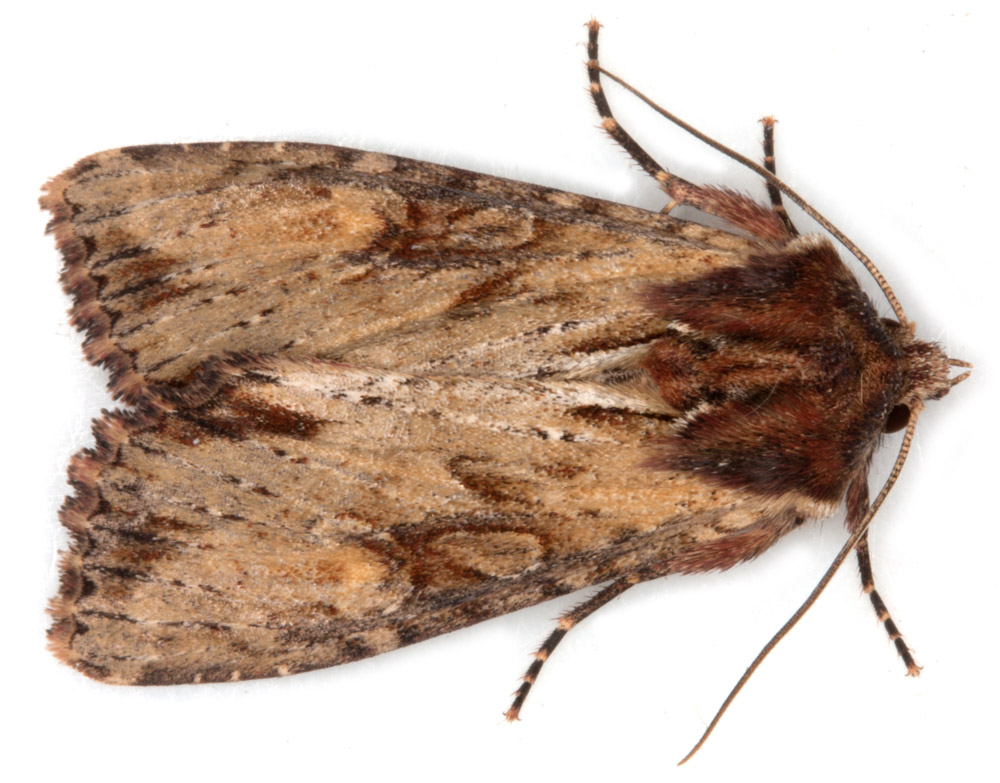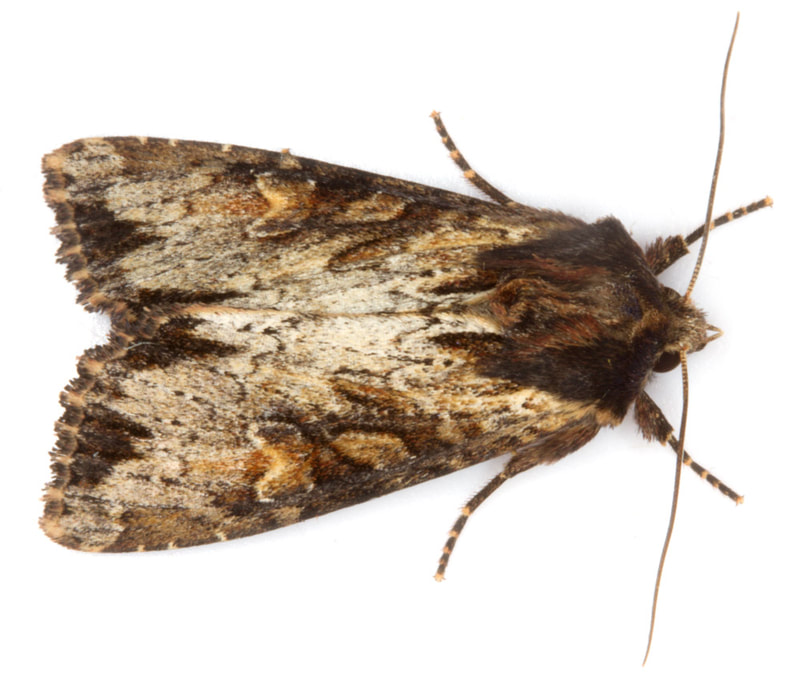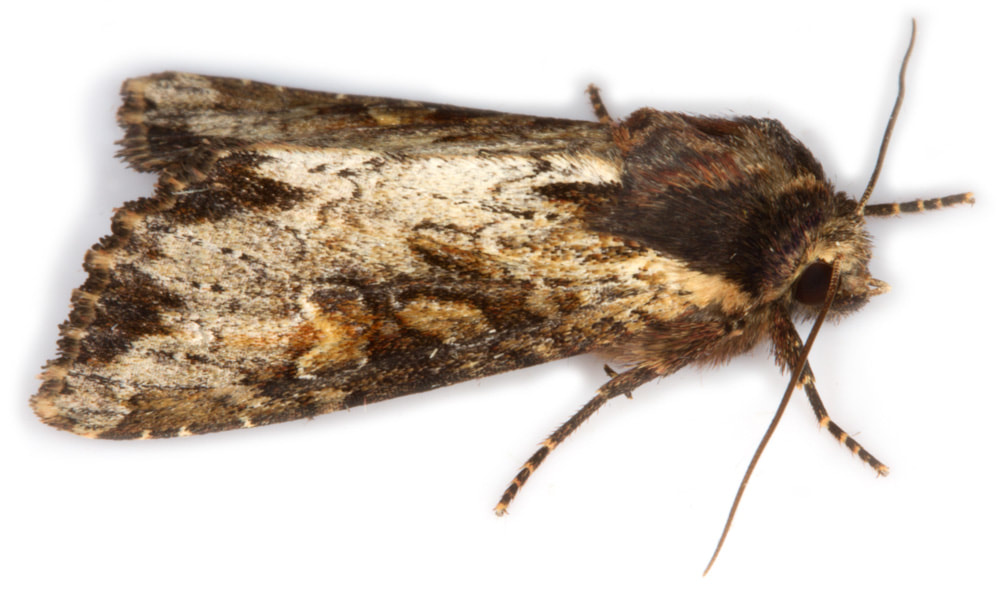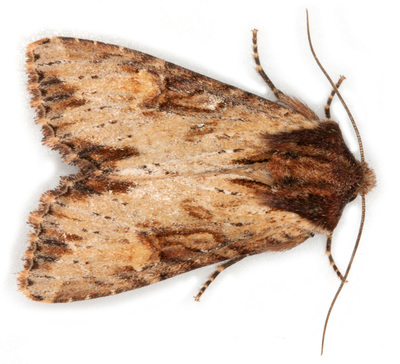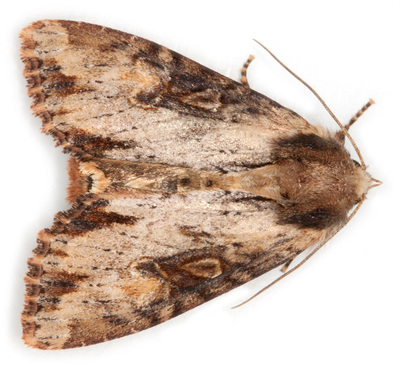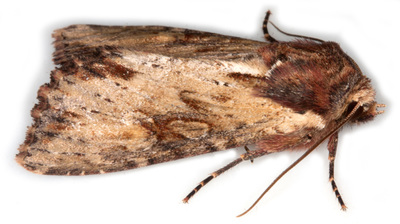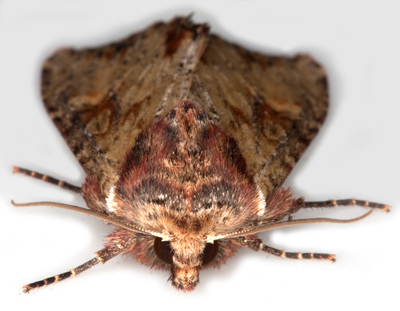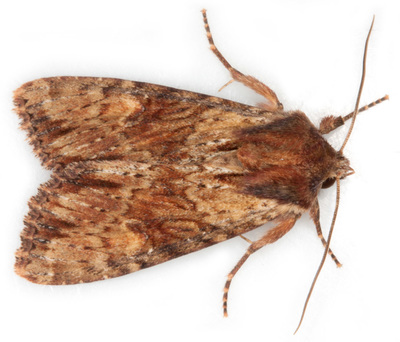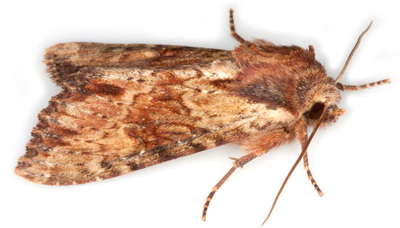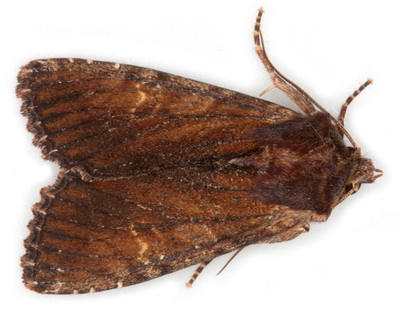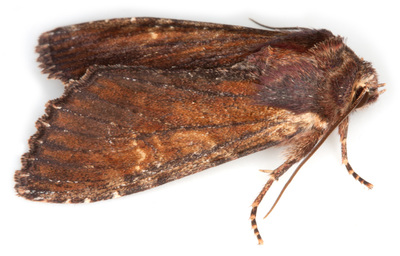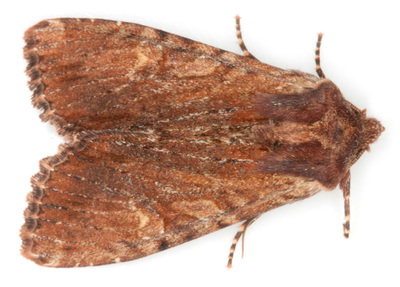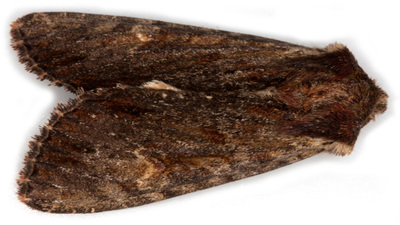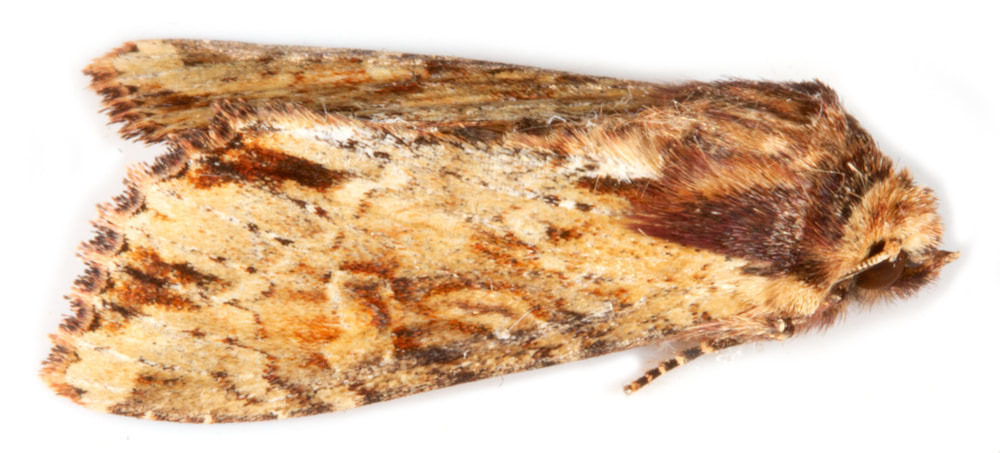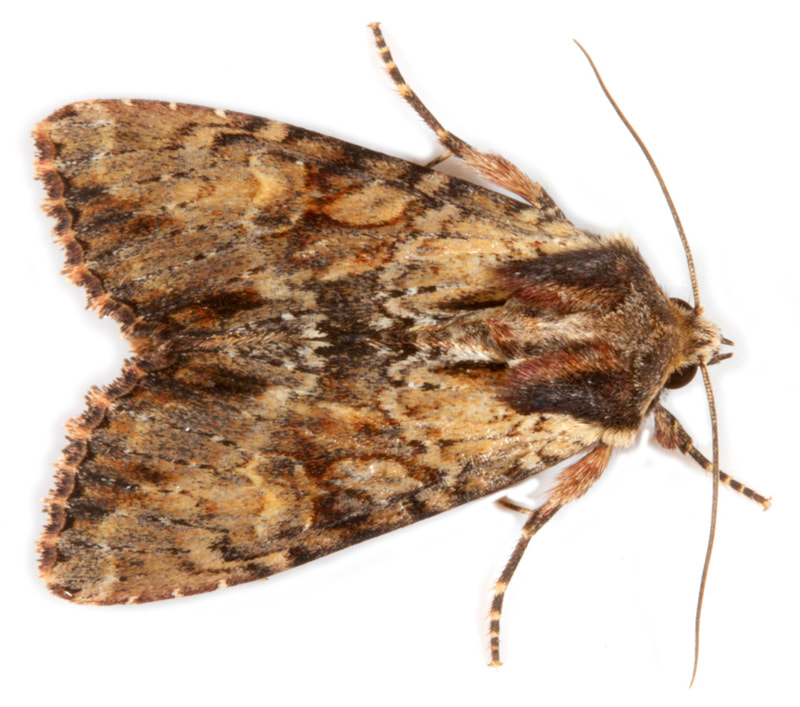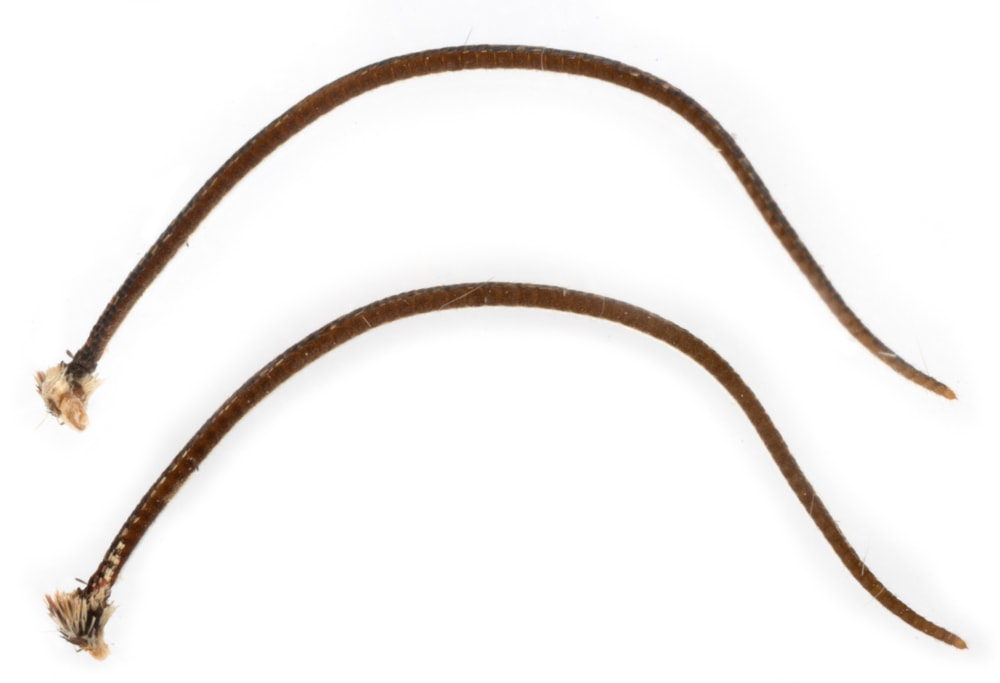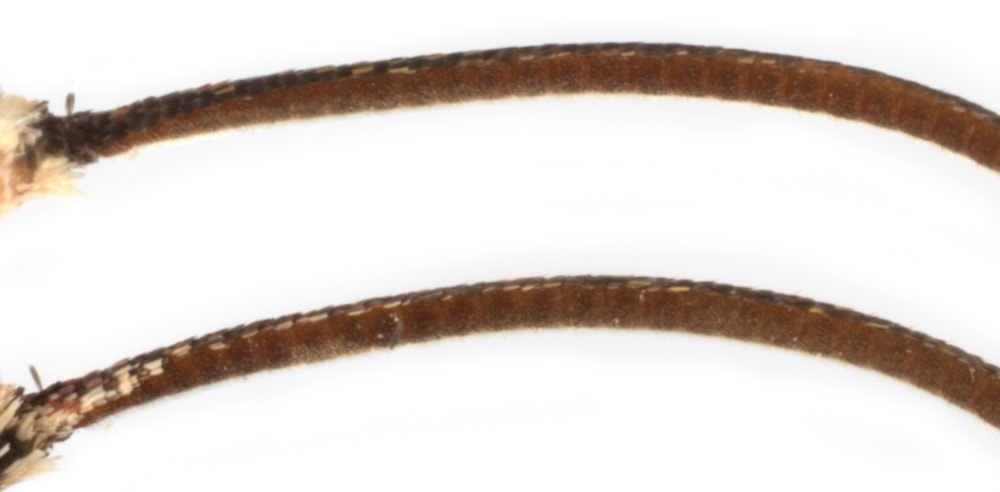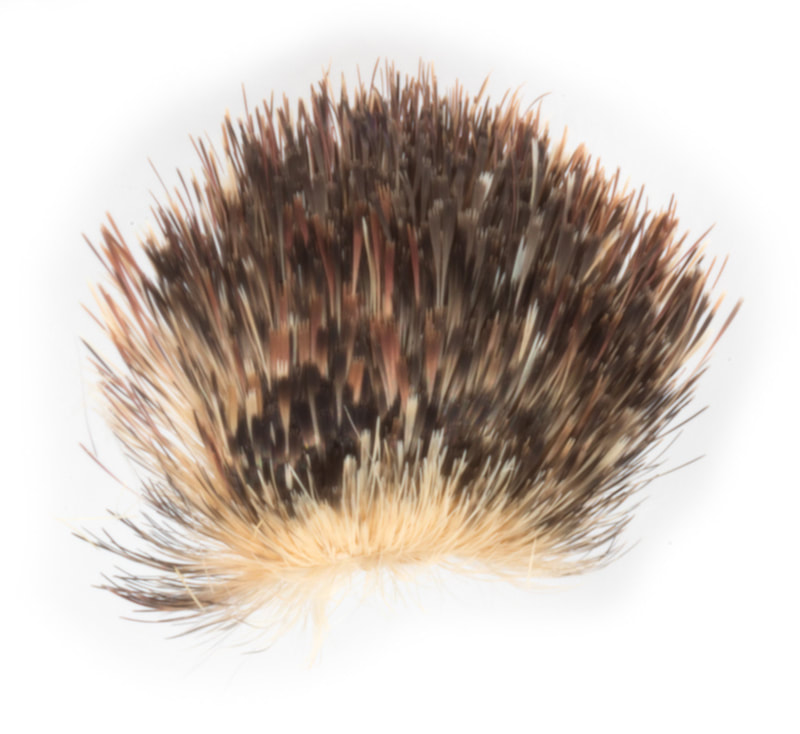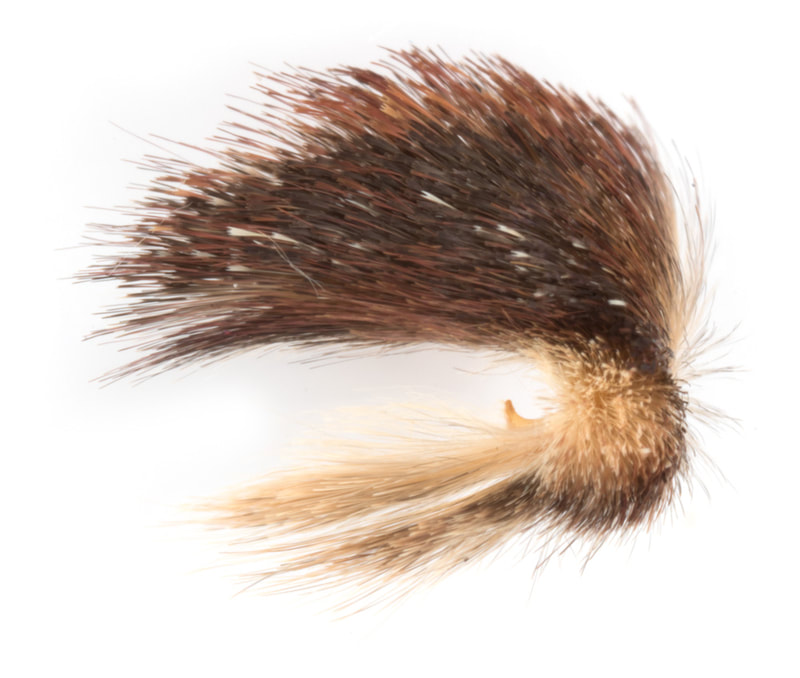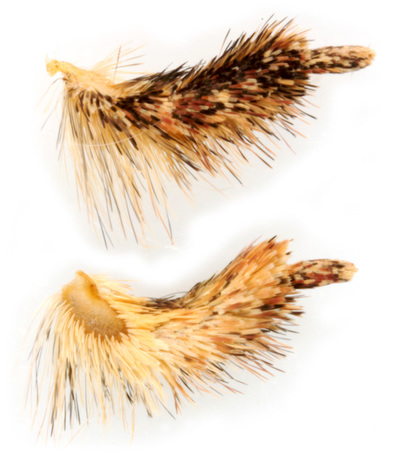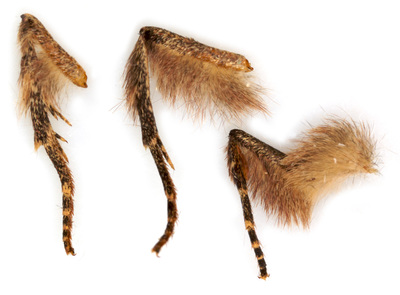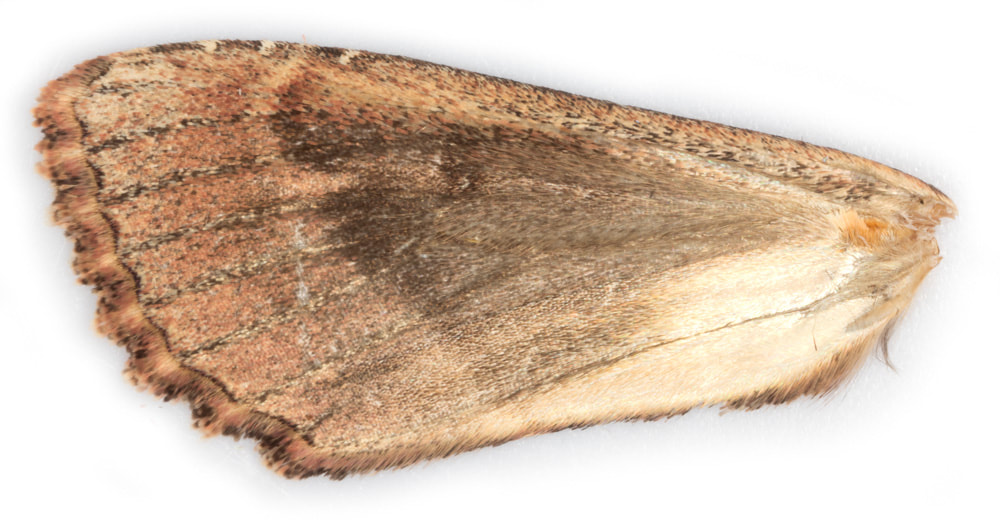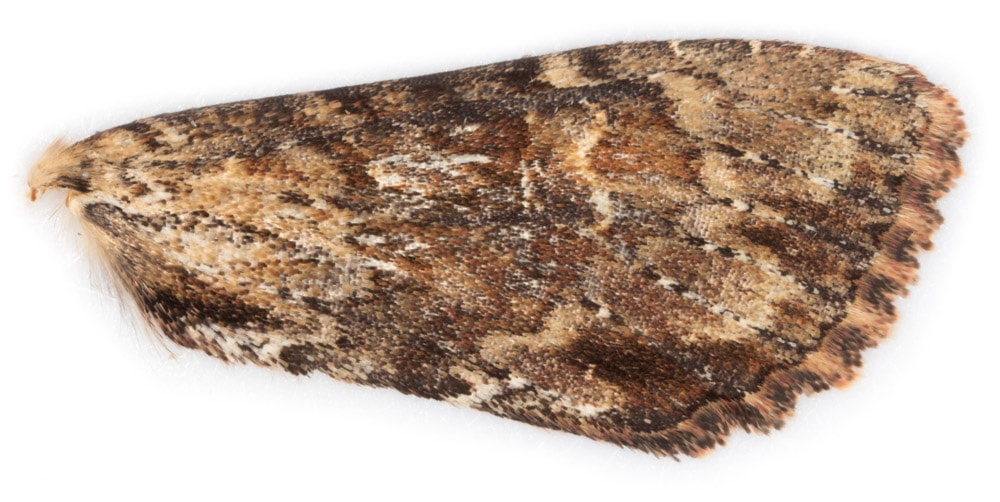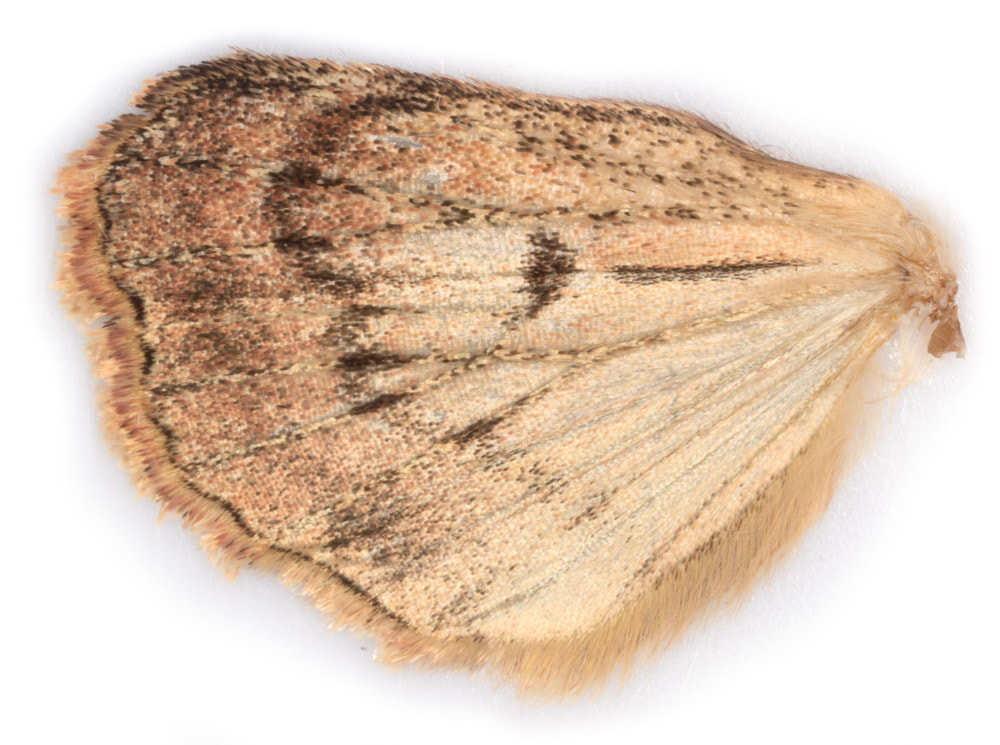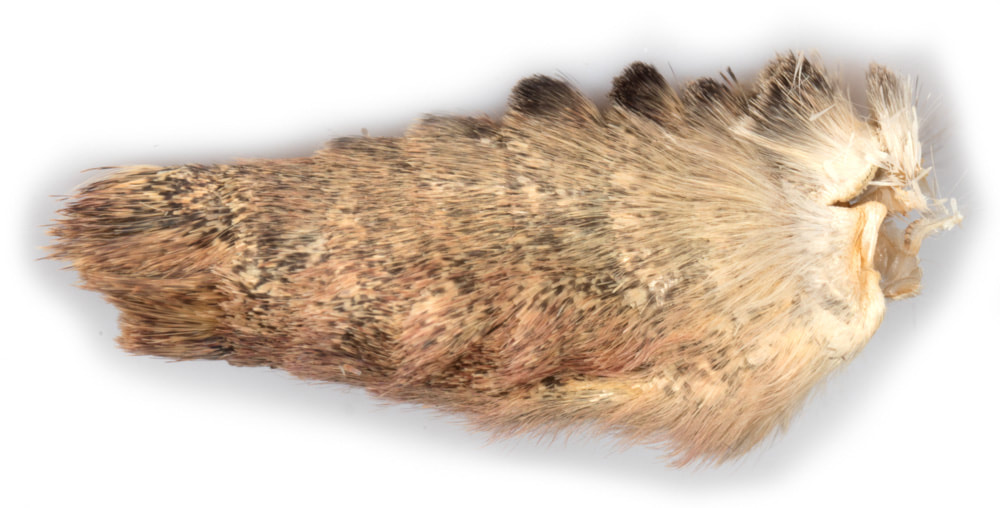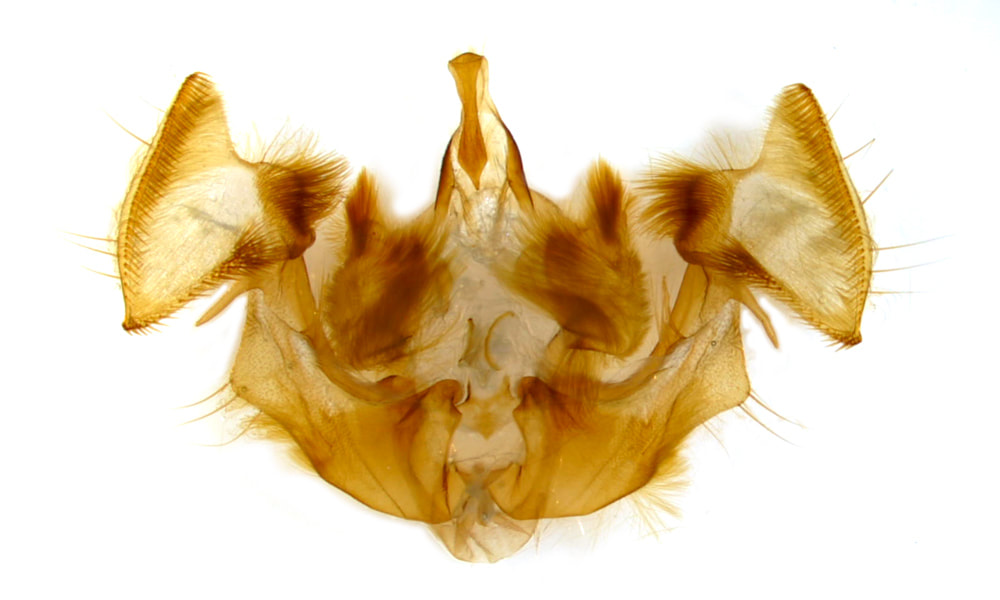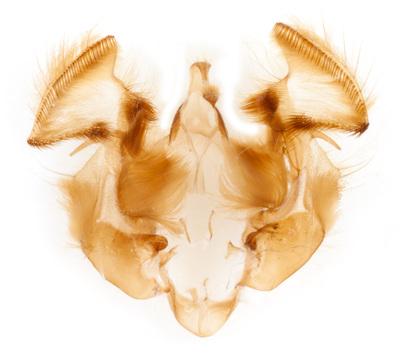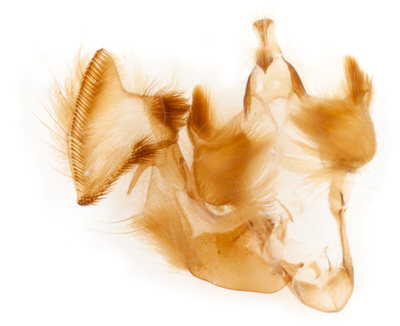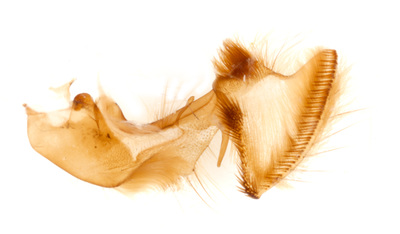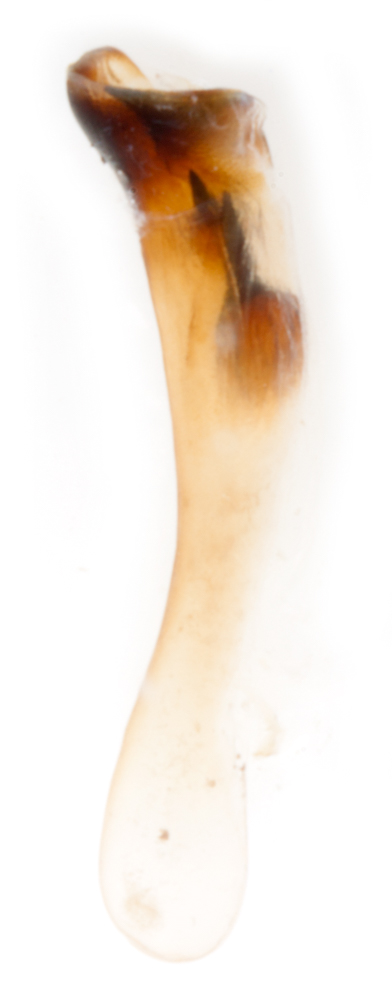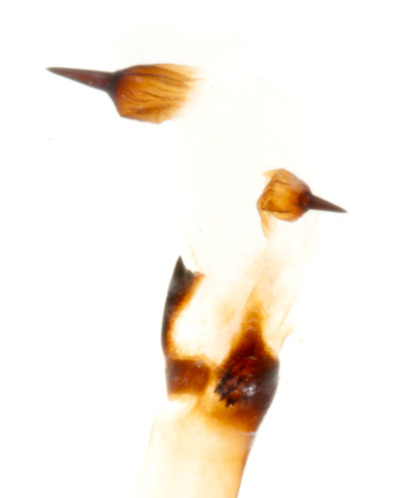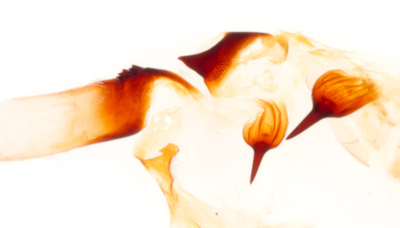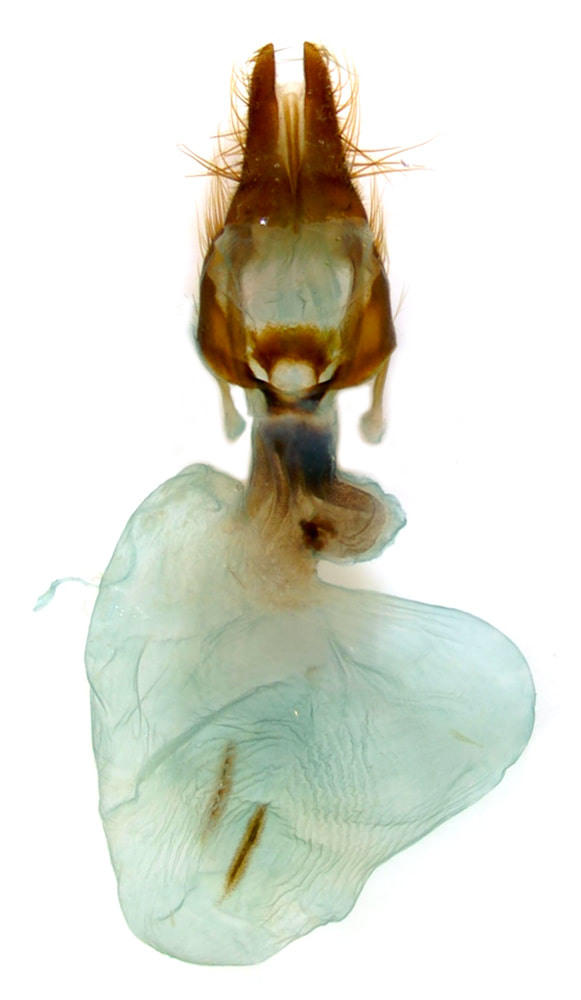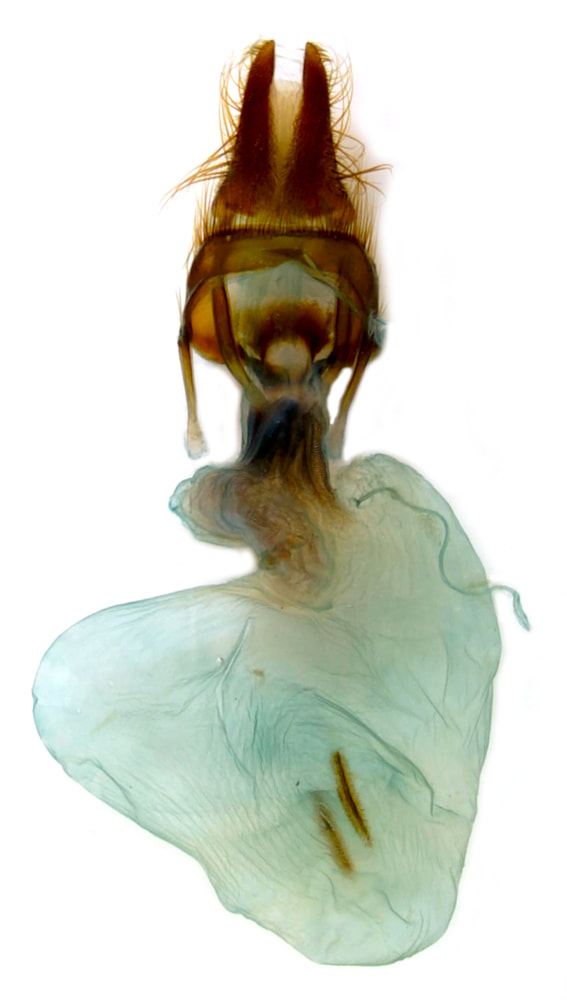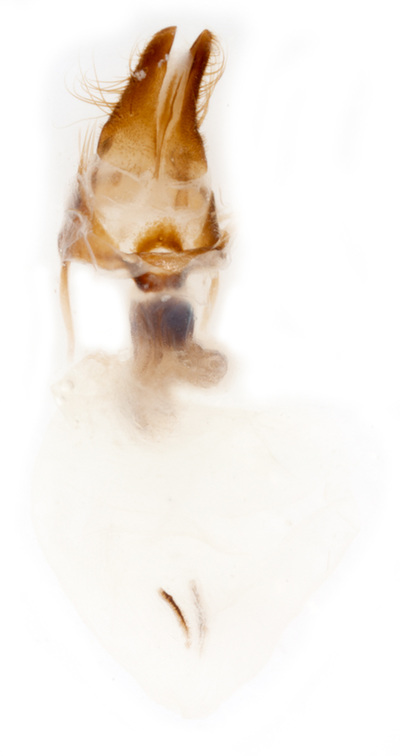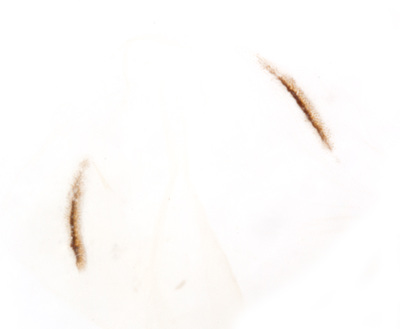73.156 Apamea crenata (Clouded-bordered Brindle)
fw: 18-22mm (Waring & Townsend), ws: 36-44mm (MBGBI10); May-Jul; grasses (Poaceae); common throughout GB.
ID: Antenna: male - setose, female - finely ciliate.
Form crenata has a light yellowish-brown forewing with a reddish-brown streak along the dorsum from the tornus to a level with the kidney mark, a reddish-brown wedge projecting from the centre of the termen and usually double-pointed, these two markings may be connected by a reddish-brown terminal band; a short basal streak along the dorsum; reddish-brown clouding on the costa in the region of the stigmata; antemedian and postmedian lines each formed of a double row of black neural dots.
Form combusta is plain reddish-brown with just the oval and kidney marks pale, all other markings obscured.
Form argentea is white with just a trace of markings.
Form alepecurus is dark with black costal streaks and the kidney mark outlined in black.
Form nigro-rubida is blackish-red with all markings obscured except for a faint oval and pale distal margin to the kidney mark.
§7,10 & 13 show a median fascia - it is unclear to me whether this is a separate named form or a variant of crenata.
Form crenata (and variants showing a median fascia) are similar to A.epomidion (Clouded brindle) which has a distinct pale subterminal line and equally well-developed central and dorsal basal streaks; in A.crenata the dorsal streak is longer and stronger than the central streak.
The rare migrant, A.lateritia (Scarce Brindle), is similar to form combusta but averages larger (fw: 19-24mm, ws: 45-56mm) - a feature which is reliable using MBGBI10s size range but shows considerable overlap according to Waring & Townsend. In A.lateritia the oval mark is indistinct and the kidney mark has a white distal margin; the oval of A.crenata is very variable and may also be indistinct - but a distinct oval should exclude A.lateritia. MBGBI10 mentions that in A.lateritia the terminal fascia contains a row of small black dots - these are not shown in the illustration in Waring & Townsend and cannot be seen in web images labelled as this species. The illustration and some of the images do show a fairly distinct postmedian row of neural dots and these are usually obscured or indistinct in form combusta of A.crenata.
I have been unable to find any information on the genital features of A.lateritia.
Form crenata has a light yellowish-brown forewing with a reddish-brown streak along the dorsum from the tornus to a level with the kidney mark, a reddish-brown wedge projecting from the centre of the termen and usually double-pointed, these two markings may be connected by a reddish-brown terminal band; a short basal streak along the dorsum; reddish-brown clouding on the costa in the region of the stigmata; antemedian and postmedian lines each formed of a double row of black neural dots.
Form combusta is plain reddish-brown with just the oval and kidney marks pale, all other markings obscured.
Form argentea is white with just a trace of markings.
Form alepecurus is dark with black costal streaks and the kidney mark outlined in black.
Form nigro-rubida is blackish-red with all markings obscured except for a faint oval and pale distal margin to the kidney mark.
§7,10 & 13 show a median fascia - it is unclear to me whether this is a separate named form or a variant of crenata.
Form crenata (and variants showing a median fascia) are similar to A.epomidion (Clouded brindle) which has a distinct pale subterminal line and equally well-developed central and dorsal basal streaks; in A.crenata the dorsal streak is longer and stronger than the central streak.
The rare migrant, A.lateritia (Scarce Brindle), is similar to form combusta but averages larger (fw: 19-24mm, ws: 45-56mm) - a feature which is reliable using MBGBI10s size range but shows considerable overlap according to Waring & Townsend. In A.lateritia the oval mark is indistinct and the kidney mark has a white distal margin; the oval of A.crenata is very variable and may also be indistinct - but a distinct oval should exclude A.lateritia. MBGBI10 mentions that in A.lateritia the terminal fascia contains a row of small black dots - these are not shown in the illustration in Waring & Townsend and cannot be seen in web images labelled as this species. The illustration and some of the images do show a fairly distinct postmedian row of neural dots and these are usually obscured or indistinct in form combusta of A.crenata.
I have been unable to find any information on the genital features of A.lateritia.
|
§1 Sutton Fen, Norfolk; 04/06/2009; female; fw 18.7mm; form crenata
§2 Cyffdy Farm, Gwynedd; 19/06/2010; female; fw 19.3mm; form crenata §3 Cyffdy Farm, Gwynedd; 20/06/2010; female; fw 18.5mm; form nigro-rubida? §4 Newgale, Pembrokeshire; 13/05/2011; female; fw 20.0mm; form crenata §5 Newgale, Pembrokeshire; 15/05/2011; male; fw 18.6mm; form combusta §6 Mull; 25/06/2011; form combusta §7 Kinlochleven, Argyll; 07/07/2011; male; fw 19.3mm; form? §8 Mull; 17/06/2018; male; fw 17.5mm; form combusta §9 Mull; 21/06/2018; form crenata §10 Mull; 21/06/2019; female; fw 17.6mm; form? All images © Chris Lewis |
§11 Kishorn, Ross & Cromarty; 19/06/2022; form crenata
§12 Kishorn, Ross & Cromarty; 21/06/2022; form combusta §13 Kishorn, Ross & Cromarty; 21/06/2022; female; fw 18.0mm; form? |
Page published 16/03/2016 (§1-7) | §8-10 added 20/04/2019 | §11-13 added 11/12/2022
